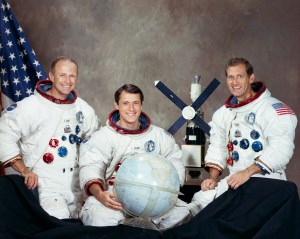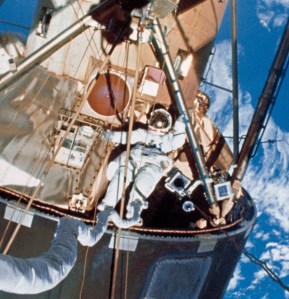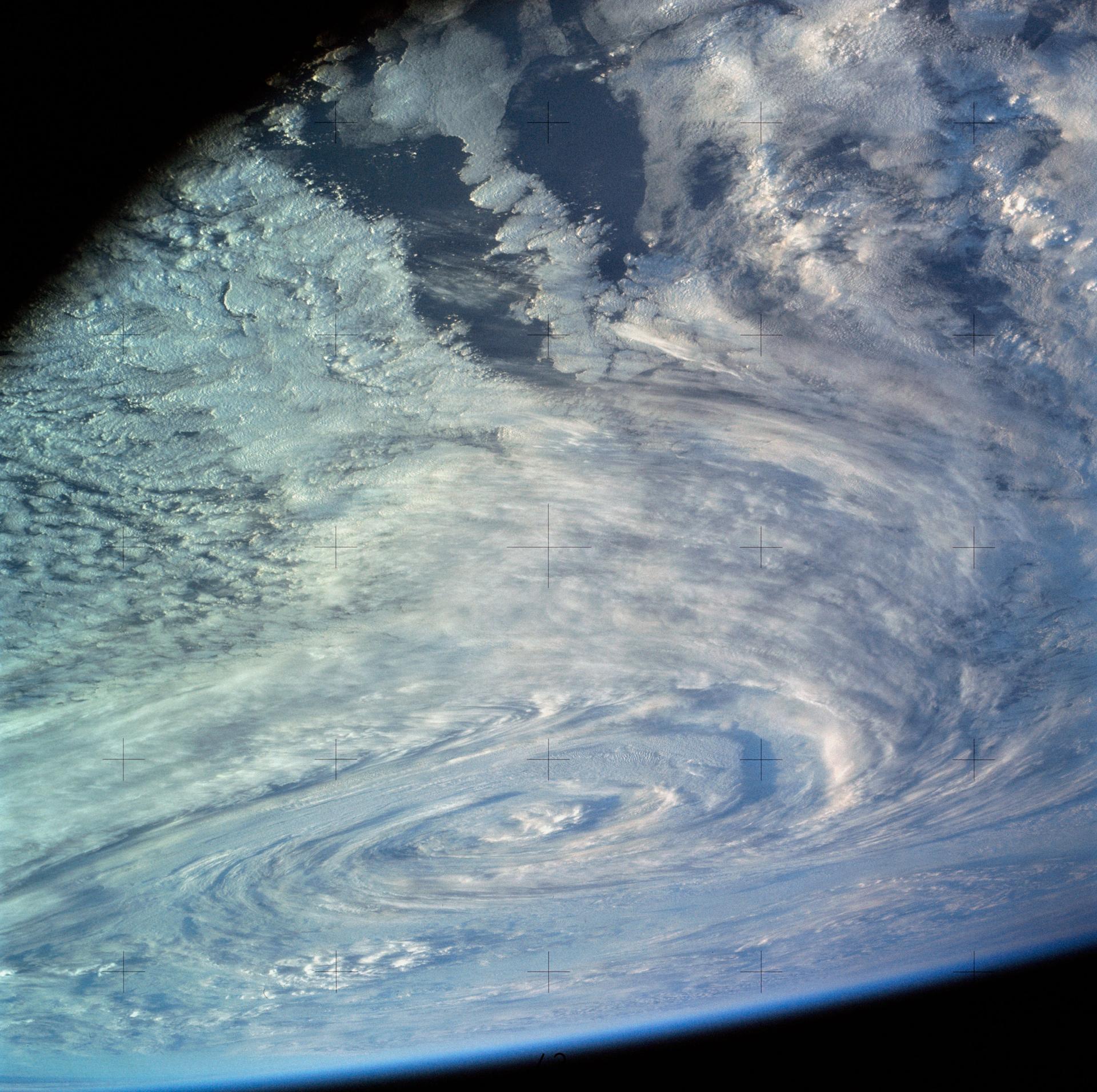An urban legend tells the story of how, dissatisfied with the micromanagement of their daily timelines, the Skylab-4 crew staged a strike, some called it a mutiny, by turning off the space station’s radio, taking the day off, and doing whatever they pleased. On the 47th anniversary of the launch of the Skylab 4 crew of Gerald P. “Jerry” Carr, Edward G. Gibson, and William R. Pogue, it seems appropriate to revisit the origins of the story and determine its validity. After a thorough review of the available evidence, it is clear that no strike or mutiny took place during the Skylab 4 mission. The astronauts and ground controllers resolved crew scheduling issues during an inflight operations conference, dramatically improving the crew’s effectiveness and performance. They exceeded preflight plans in terms of scientific accomplishments during their record-setting 84-day mission.
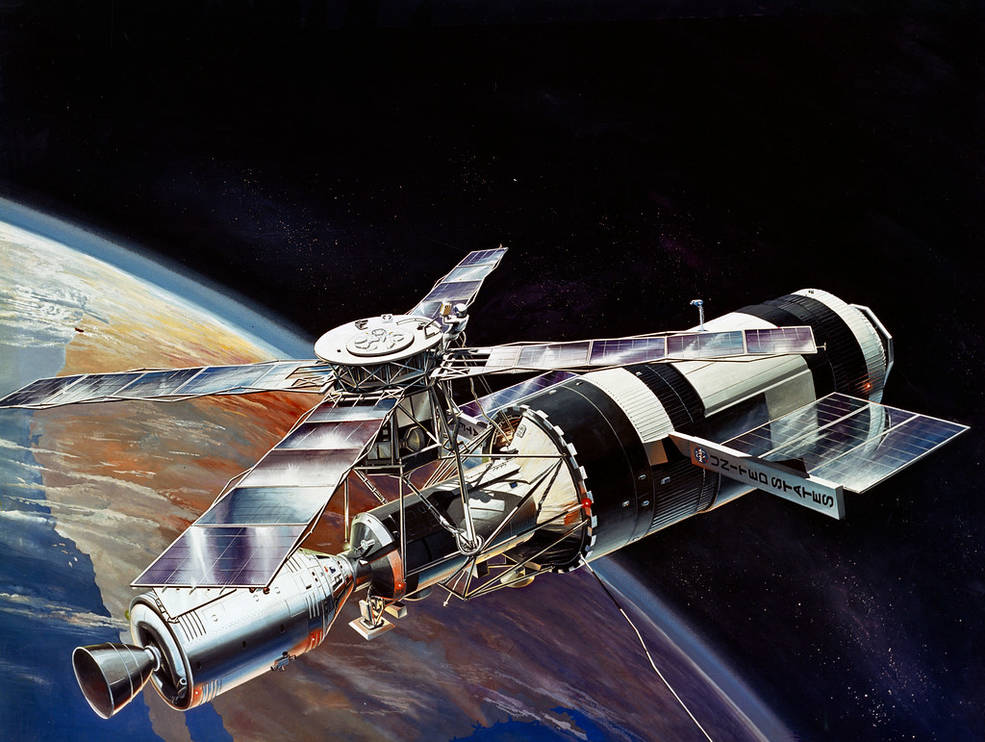
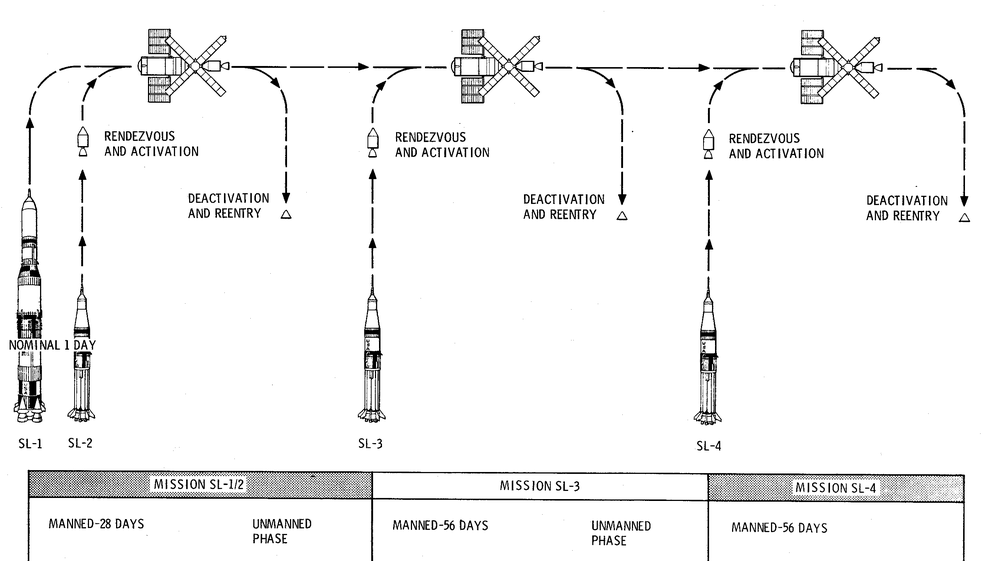
Left: Illustration of Skylab in orbit from 1972. Right: Schematic of the Skylab Program, showing the launch of the workshop, left, and the three successive three-man crews.
The Skylab Program emerged from the Apollo Applications Program of the mid-1960s that sought to use hardware from the Apollo Moon landing program to develop America’s first space station. To build Skylab, engineers converted a Saturn rocket upper stage into an orbital workshop designed to house three successive crews of three astronauts for periods of 28, 56, and 56 days. First and foremost, Skylab was intended as a research platform in low-Earth orbit, focusing primarily on studying human adaptation to long-duration spaceflight, observing the Sun, and monitoring the Earth. Investigations in physics, materials processing, and student-designed experiments rounded out Skylab’s research portfolio. A series of experiments investigated the responses of the astronauts’ physiologic systems to the effects of long-duration weightlessness. The Apollo Telescope Mount (ATM) contained instruments to observe the Sun and other celestial objects, while instruments looking down at the home planet comprised the Earth Resources Experiment Package.

Skylab astronauts Alan L. Bean, left, Jack R. Lousma, Paul J. Weitz, Charles “Pete” Conrad, Joseph P. Kerwin, Gerald P. “Jerry” Carr, Edward G. Gibson, William R. Pogue, and Owen K. Garriott inside the Skylab 1-G trainer.
NASA selected nine astronauts as the prime crews to live and work aboard Skylab. Gemini and Apollo veteran Charles “Pete” Conrad commanded the first crew, joined by science pilot and physician Joseph P. Kerwin and pilot Paul J. Weitz, both making their first spaceflights. Apollo 12 veteran Alan L. Bean commanded the second crew, with first-time flyers Owen K. Garriott as science pilot and Jack R. Lousma as pilot. The third crew consisted of commander Carr, science pilot Gibson, and pilot Pogue. Although none of the last crew members had prior spaceflight experience, all had served in backup or support roles for Apollo Moon landing missions.
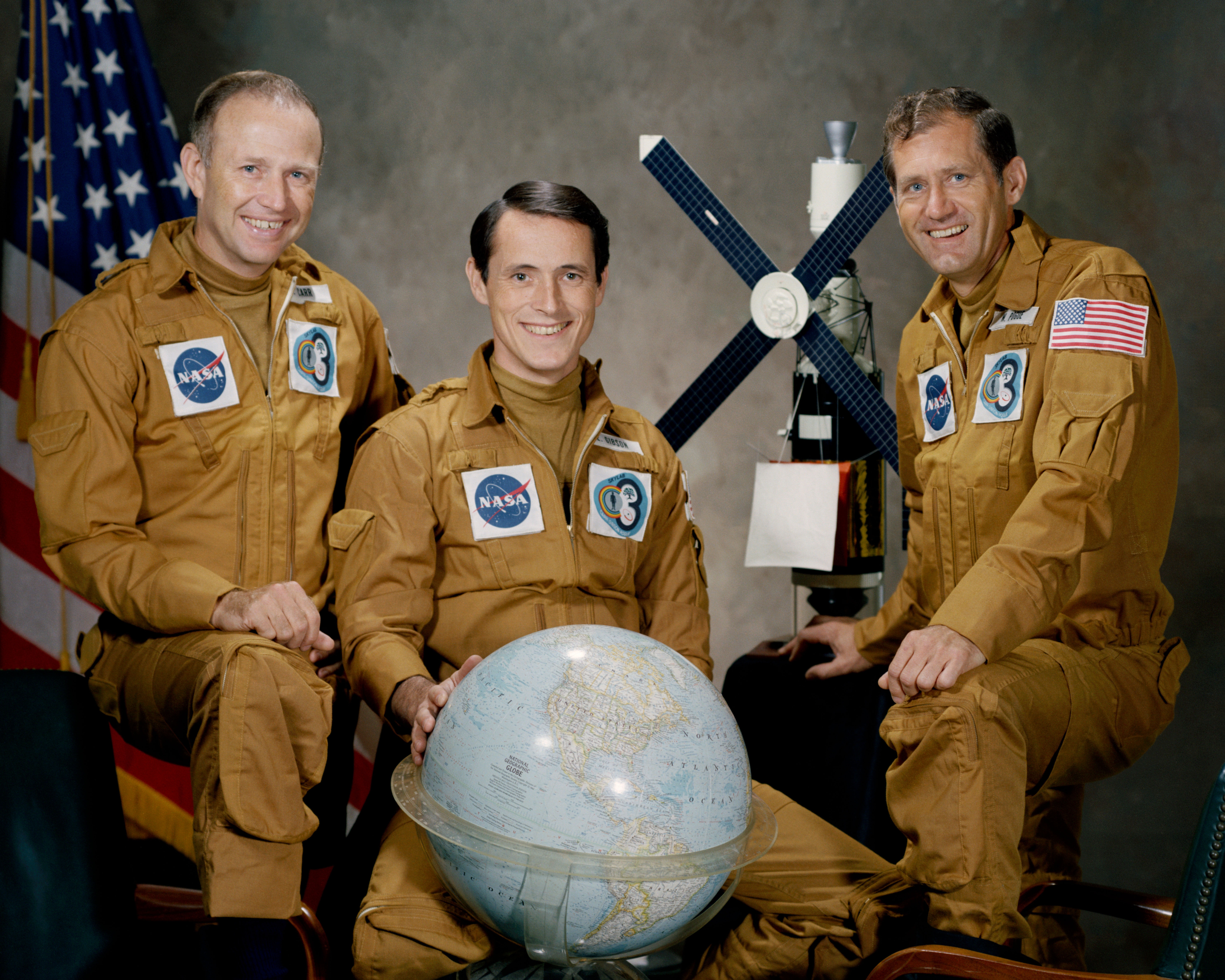
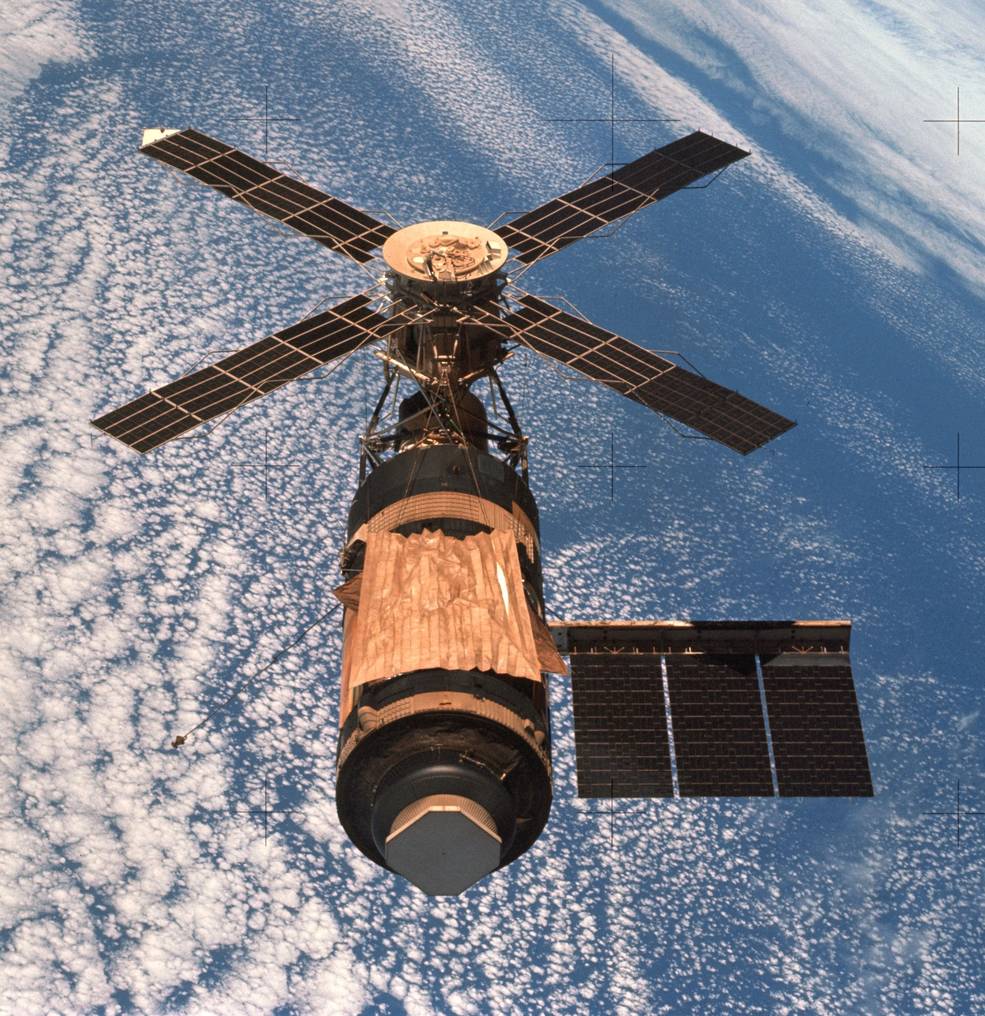
Left: The Skylab 4 crew of Gerald P. Carr, Edward G. Gibson, and William R. Pogue. Right: The Skylab space station as seen by the Skylab 4 crew.
The Skylab space station launched from NASA’s Kennedy Space Center on May 14, 1973, and within 63 seconds the entire program appeared doomed. During the ascent, aerodynamic forces caused the micrometeoroid and thermal shield to tear away from the outside of the workshop, leaving the station unprotected from the Sun’s intense rays upon reaching orbit. The loss of the shield partially deployed the workshop’s two large solar arrays. Debris from the torn shield jammed one of the arrays, preventing it from opening, and a plume from a retrorocket used to separate the Saturn V’s second stage from Skylab impinged on the second array, in its slightly open configuration, tearing it completely off the station. Skylab made it to orbit, but without the thermal shield, temperatures inside the workshop began to climb, and without the power generated by the two large solar arrays, the station had to rely on the four smaller ATM arrays, insufficient for operating the station’s systems and experiments. Managers called off the launch of the first crew, planned for the next day, as they considered options to save the crippled station.
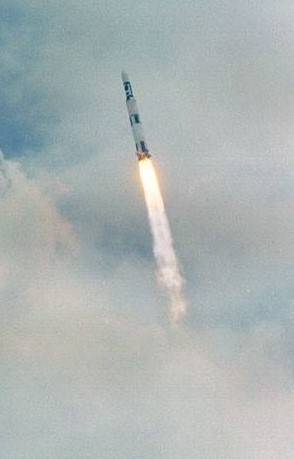
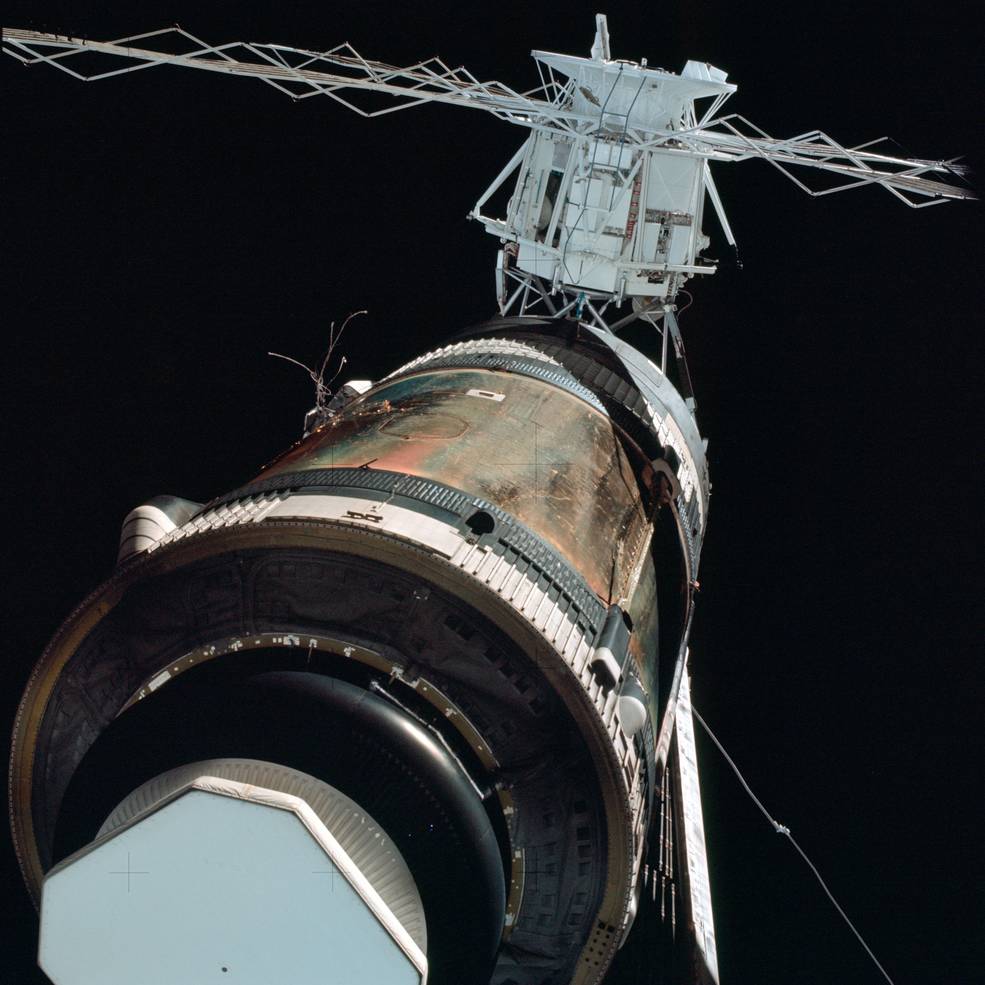
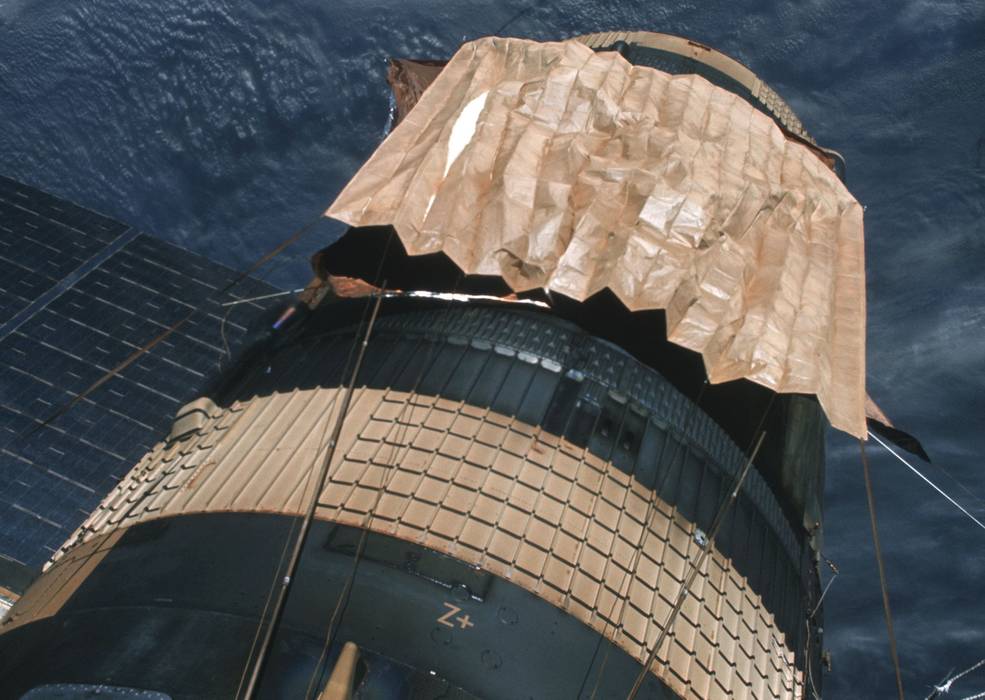
Left: The Skylab space station during ascent on its Saturn V rocket just a few seconds before the micrometeoroid and thermal shield tore off. Middle: View of Skylab as seen by the Skylab 2 crew during the pre-docking fly-around inspection, showing the exposed skin of the workshop, the jammed solar array at lower right, and severed cables at upper left where the second solar array was torn off. Right: View of Skylab showing the second sunshade placed over the first one to protect the workshop.
The Skylab 2 crew of Conrad, Kerwin, and Weitz finally launched on May 25, and as they approached the station, they clearly saw the damage. The Sun’s harsh rays had already begun to discolor and blister the exposed skin of the workshop. They could clearly see the thin strip of aluminum holding one array in a slightly open position and a tangle of severed cables where the second array had torn away. Once inside the overheated station, they deployed a parasol-like sunshade, and internal temperatures quickly began to drop. On June 7, Conrad and Kerwin released the jammed solar array during a daring spacewalk, and now with sufficient power, the rest of the program could proceed. The Skylab 2 crew splashed down on June 22, completing a record-setting 28-day mission. On July 28, the Skylab 3 crew of Bean, Garriott, and Lousma took up residence aboard the station. During their 59-day mission, they deployed a second more permanent sunshade to keep the station cool. They exceeded preflight expectations on the amount of science they completed, earning themselves the nickname of the “150% crew.” They splashed down on Sep. 25.
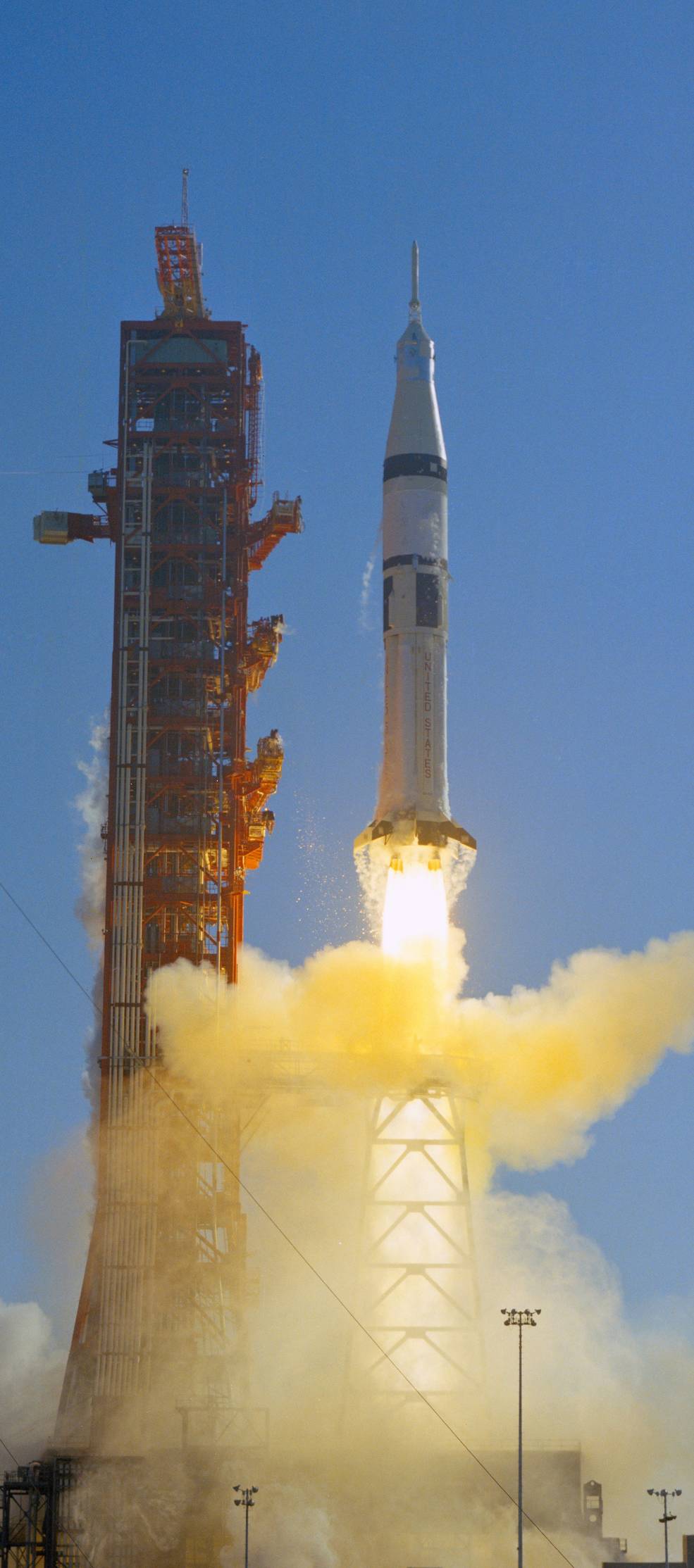
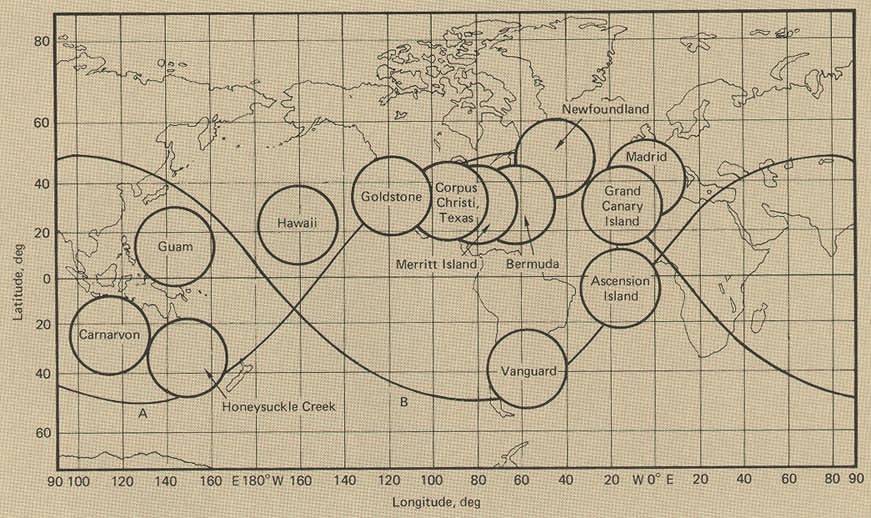
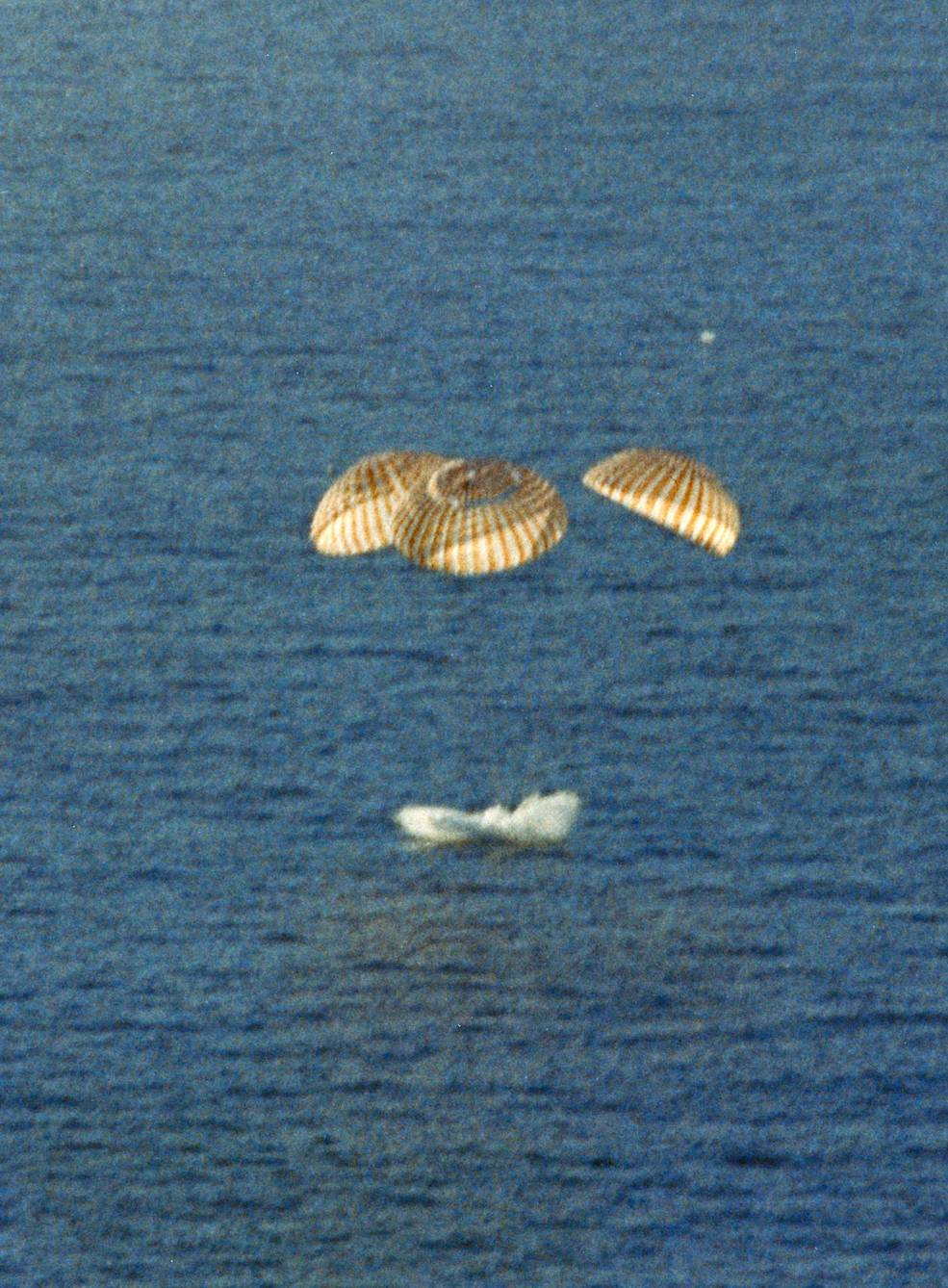
Left: Launch of the Skylab 4 crew. Middle: Schematic illustration of Skylab’s orbital track showing the various ground sites used to communicate with the station. Right: Splashdown of the Skylab 4 crew.
By the time the Skylab 4 astronauts launched on Nov. 16, mission managers had provisionally extended their 56-day mission to 84 days, dependent on their and the station’s health as the flight progressed. The one-month extension resulted in researchers adding new medical experiments to better monitor the astronauts’ health. However, the astronauts had minimal time left to train for these activities, relying on on-orbit training to achieve proficiency. Flight surgeons increased the astronauts’ planned daily exercise time by 50% and added an improvised treadmill to help minimize bone loss and muscle deconditioning. Scientists added observations of the newly discovered Comet Kohoutek, expected to make its closest approach to the Sun around Dec. 25, to their schedule. Observations of the comet using an ultraviolet camera required the addition of two new spacewalks. Typically, mission planners allowed crews a period of adjustment as they acclimated to working in weightlessness aboard the station by not overscheduling their timelines during the first few weeks. Partly because of the additional activities and partly owing to the achievements of the Skylab 3 crew by the end of its mission, planners scheduled the beginning of the Skylab 4 timeline as if they had already adjusted to being in orbit. That led to some frustrations as the astronauts struggled to keep up with the blistering pace of the timeline, allowing no time for familiarization or to recover from errors and hardware malfunctions. Repeated requests by the astronauts to Mission Control to lighten their schedule went unheeded for several weeks, leading to tension between the crew and the ground. Skylab flight director Neil B. Hutchinson later admitted that ground controllers erred in how they planned the timelines during the first part of the Skylab 4 mission. Despite this, the astronauts continued with the research program and completed three spacewalks, the first on Nov. 22 and the next two on Dec. 25 and 29 to observe Comet Kohoutek.

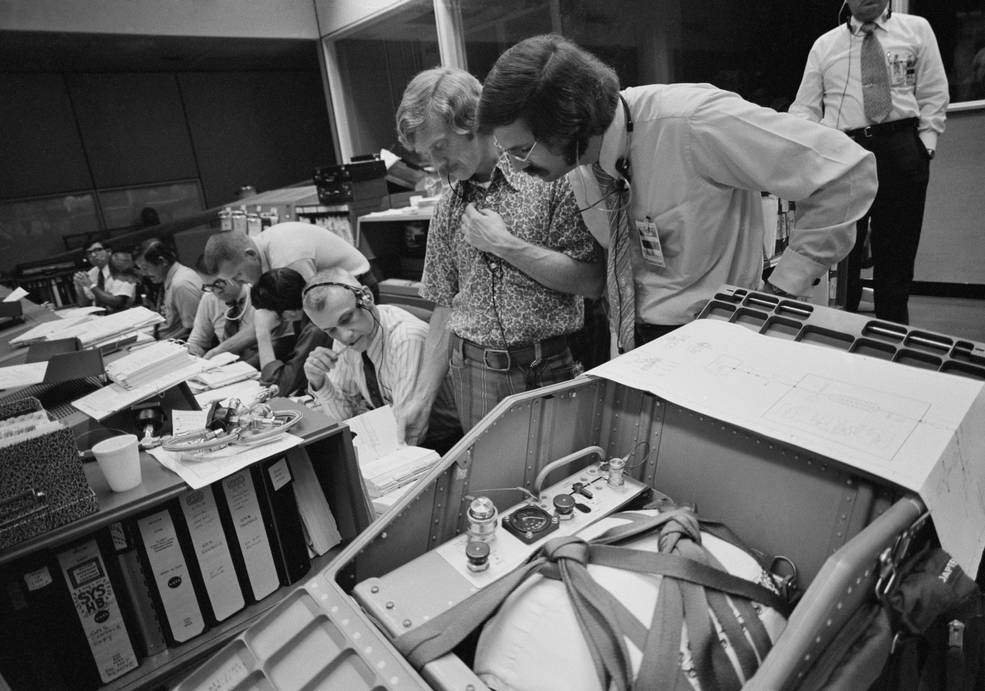
Left: Preflight view of the improvised treadmill added to the Skylab 4 mission. Right: Astronaut Russell L. Schweickart, standing left, confers with Skylab flight director Neil B. Hutchinson.
At the end of the crew’s day on Dec. 30, at roughly the midpoint of the mission, Carr, Gibson, and Pogue held a radio conference with capsule communicator (capcom) Richard H. Truly to talk about ways to improve the scheduling process. Recommendations for improvement included protecting crew off-duty days every 10 days, minimizing scheduling activities during the crew’s pre-sleep and post-sleep periods, allowing time between different activities for the astronauts to clean up from the first, translate in what was a very large station, and set up for the next, and not splitting up the crew’s exercise periods. Truly assured the astronauts that they had been performing well and that their accomplishments compared favorably with the previous crew’s. Commander Carr summarized the conference by telling Truly, “I do appreciate all your hard work on this little session we had tonight. I think it did a world of good.” Truly responded in kind, saying, “I do too, Jerry. I feel real good about it.” From that point forward, there were no further incidents about the timeline, and the crew’s productivity remarkably increased. Five days after conducting their fourth and final spacewalk, the Skylab 4 astronauts completed their record-setting 84-day mission on Feb. 8, 1974, with a splashdown in the Pacific Ocean. They had accomplished more science than planned.
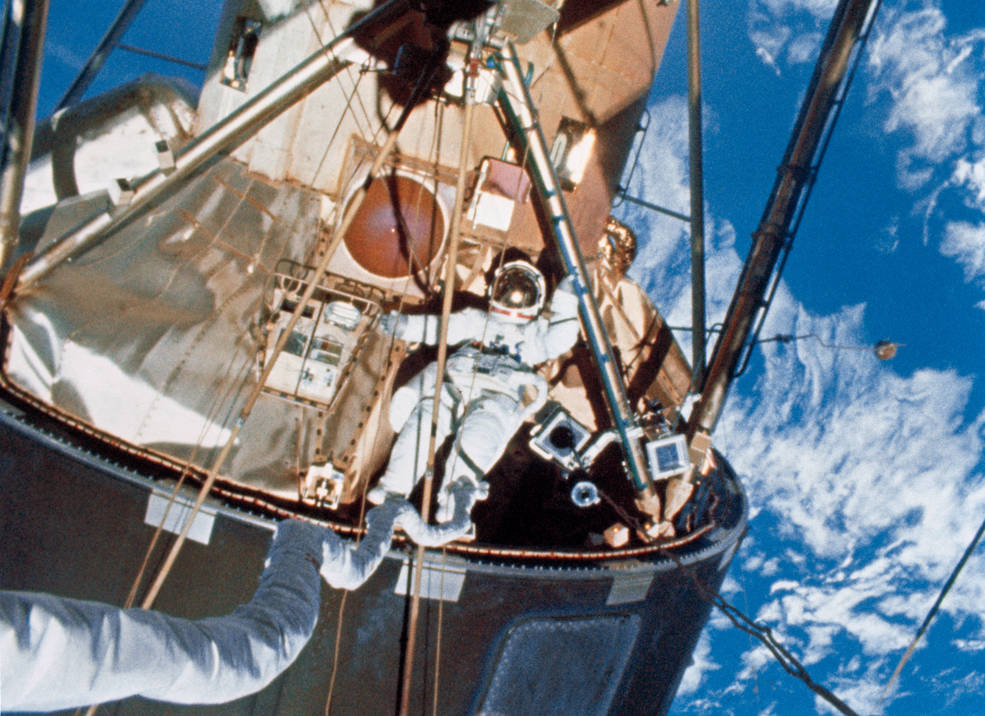
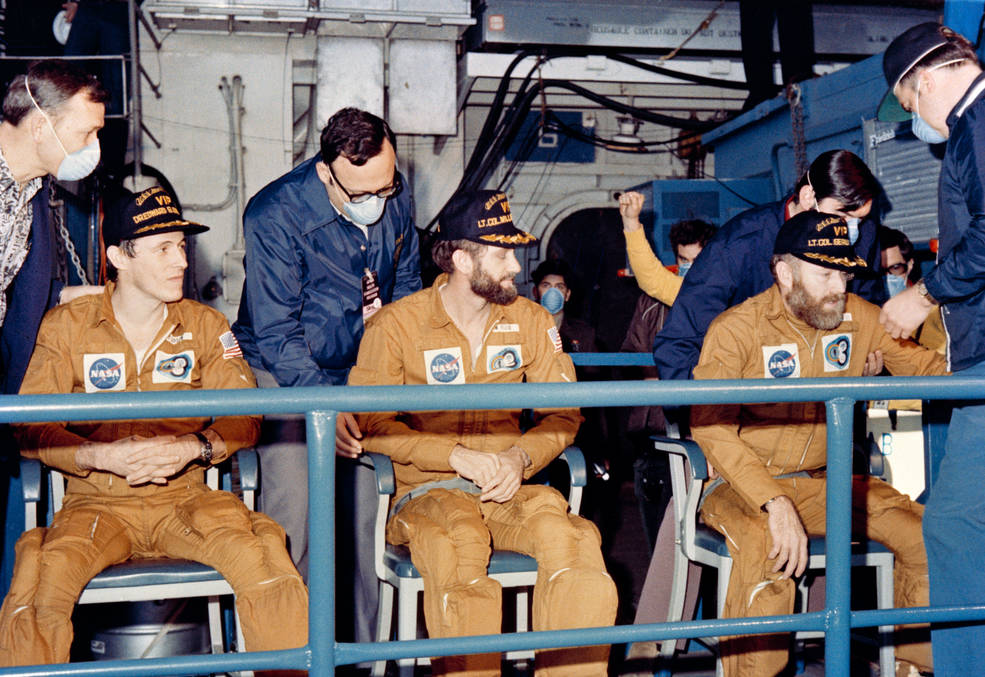
Left: Skylab 4 astronaut Edward G. Gibson during the mission’s fourth and final spacewalk. Right: Skylab 4 crew of Gibson, William R. Pogue, and Gerald P. Carr aboard the recovery ship shortly after the end of their 84-day mission.
The first mention of the alleged strike appeared in the Aug. 30, 1976 issue of The New Yorker magazine in an article by journalist Henry S.F. Cooper entitled “Life in a Space Station,” more than two years after the end of the mission. In the article, Cooper wrote, “The third crew went on a sort of sitdown strike one day about halfway through the mission. That day, Carr, Gibson, and Pogue stopped working and did exactly what they felt like doing.” That same year, Cooper published a book titled A House in Space (New York: Holt, Rinehart and Winston), expanding on the magazine article. He reiterated the claim about the Skylab 4 strike, using less ambiguous language: “The third crew went on strike at the end of the sixth week. One day, Carr, Gibson, and Pogue stopped working and did exactly what they felt like doing” (p. 129-30). He cited no sources in either the magazine or the book to support his claim.
In 1980, the Harvard Business School (HBS) developed a case study entitled “Strike in Space,” written by Michael B. McCaskey and E. Mary Lou Balbaky. The case study opens with the sentence, “On December 27, 1973, the third crew of the Skylab space station turned off the radio and refused to talk to Mission Control.” The authors did not provide a source for the actual date of the alleged strike or the part about the crew turning off the radio. In the endnotes, the authors acknowledged that “much of the material for this case is drawn” from Cooper’s 1976 book. In addition, they cited a dozen references to articles in the respected aerospace trade journal Aviation Week and Space Technology from October to December 1973, but surprisingly none that covered the day of the alleged strike. Neither Cooper nor the authors of the HBS case study interviewed the astronauts or any NASA personnel directly involved with the mission. In a review of the scholarly and public literature on the subject, it appears that all subsequent references to the alleged strike originate with these two sources.
So, after all these years, can we determine what actually happened aboard Skylab? Among original sources, publicly available transcripts of air-to-ground communications, public affairs office (PAO) commentary, and tape-recorded crew messages form an excellent corpus of reliable information. Contemporaneous articles in reputable publications provide an external frame of reference. Oral histories conducted by the History Office at NASA’s Johnson Space Center with the Skylab 4 astronauts and Skylab managers give us their perspectives on the alleged event. Books written about Skylab by recognized space historians and the astronauts themselves provide historical background.
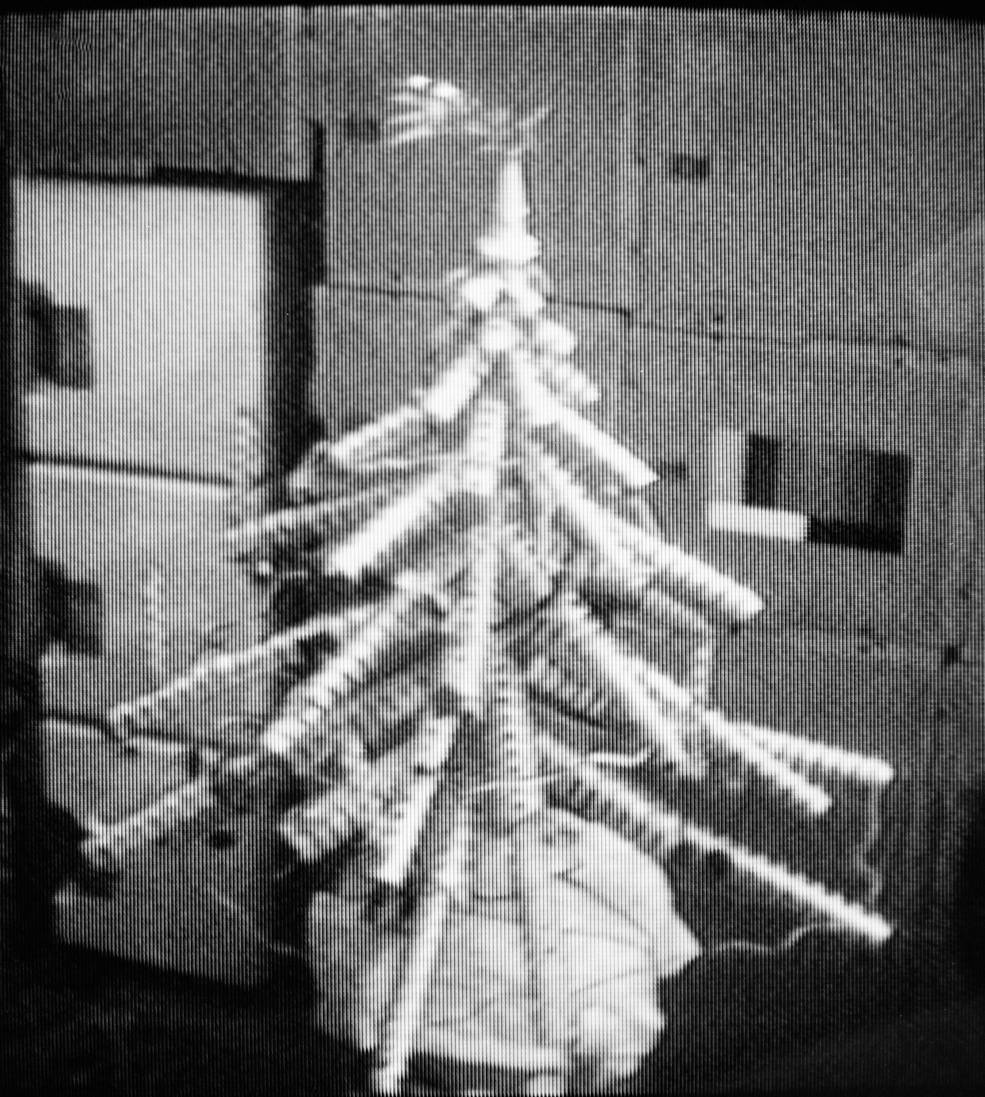
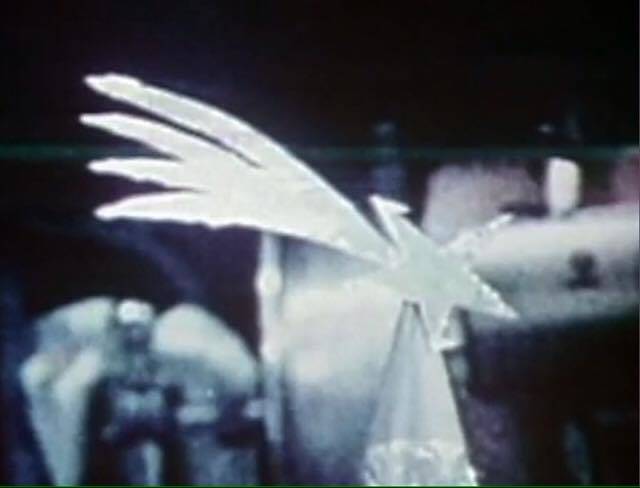
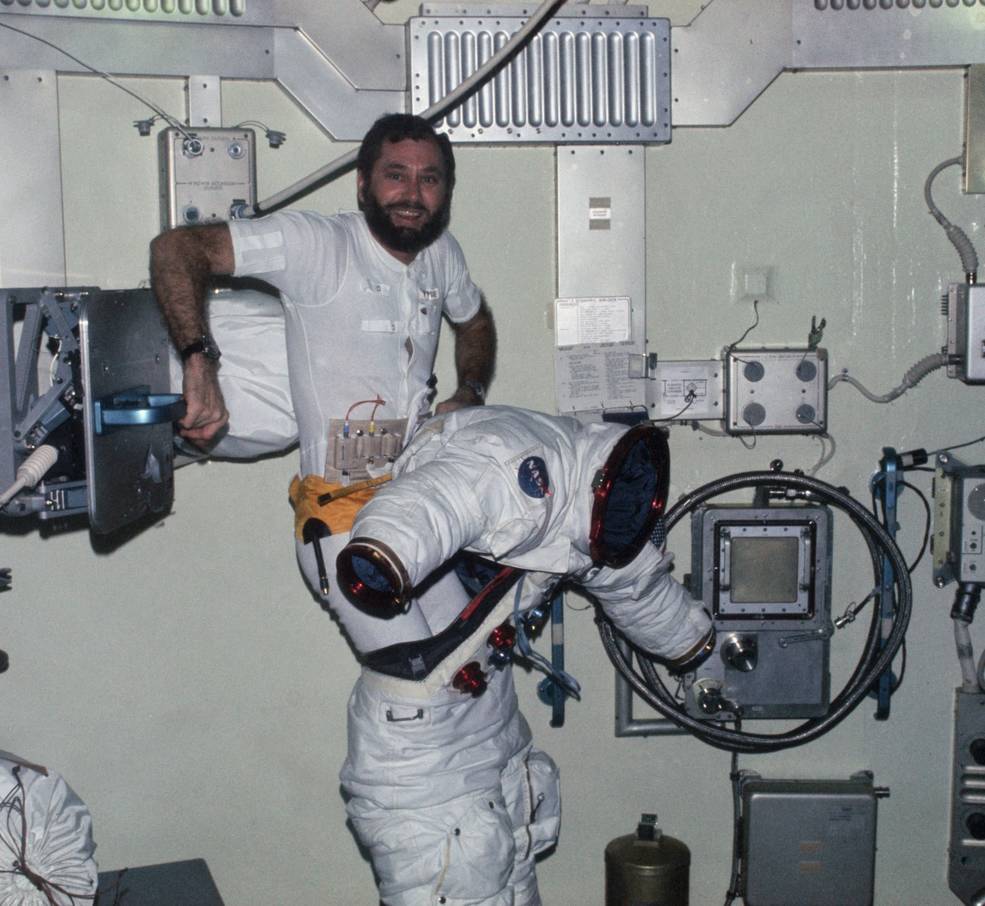
Left: The Skylab 4 astronauts built a Christmas tree from empty metal food containers. Middle: The star atop the Christmas tree was a comet fashioned out of foil, symbolizing Comet Kohoutek. Right: Skylab 4 astronaut Gerald P. Carr suiting up for the Christmas Day spacewalk.
A review of the communications and PAO commentary transcripts from the time in question clearly demonstrates that on the days around the alleged strike, the astronauts were very busy. On Dec. 25, the crew celebrated Christmas, only the second time that astronauts were in space on Christmas Day (the first time was during the Apollo 8 mission in 1968). In the morning, Capcom Russell L. Schweickart informed the crew that, because of the station’s ground track that day, they would be out of range of tracking stations for an entire orbit, or about 90 minutes. At the end of the silent orbit, the public affairs officer commented that “Skylab is back … after one full revolution with no contact.” A misunderstanding of this event may have led to the incorrect interpretation that the crew had turned off the station’s radio. Carr and Pogue conducted a seven-hour spacewalk to photograph Comet Kohoutek and to replace film canisters in the ATM. After the spacewalk, Carr inventoried urine collection bags, since it appeared that there was an insufficient quantity onboard to complete critical metabolic experiments. At the end of the day, Capcom Truly jokingly called up to the crew, “Hey if you want to I guess you can take tomorrow off,” referring to the planned off-duty day on Dec. 26, typical after a spacewalk. Carr replied, “We’ll have our answering service up tomorrow.” This exchange may have led to confusion about the manner in which the crew took the day off. At the close of the day, the PAO commentary reiterated that the following day would be a day off for the crew, that Mission Control would allow the astronauts to sleep in, and that they would still conduct three hours of ATM observations.
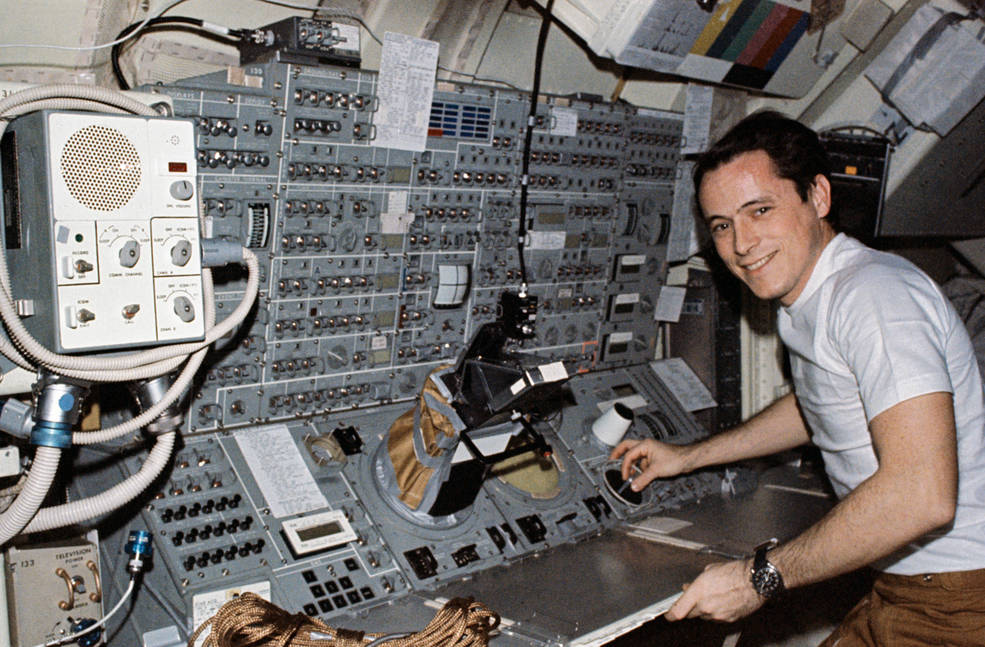
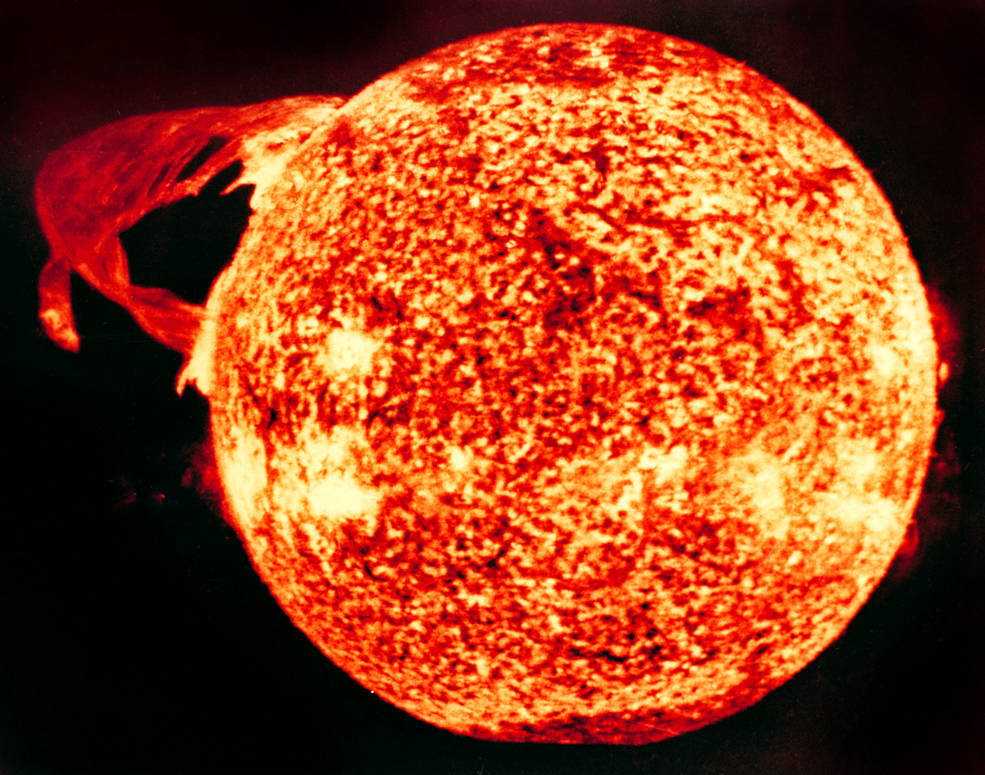
Left: Skylab 4 astronaut Edward G. Gibson at the controls of the Apollo Telescope Mount (ATM). Right: An image of a solar flare captured by one of the ATM instruments.
The next day, Dec. 26, was indeed the planned crew off-duty day, and Mission Control let the astronauts sleep an extra 30 minutes. The astronauts had leeway in what they did on their off-duty days. Sometimes they rested, used the time to catch up on work, looked at Earth through the wardroom window, read books, took showers. Gibson enjoyed observing the Sun and often conducted extra ATM sessions, which is what he did on this day. He and Pogue conducted several Earth observations while Carr filmed examples of their onboard activities. All three conducted conferences with scientists on the ground in the fields of solar physics, Earth sciences, medical investigations, and other experiments such as materials processing.
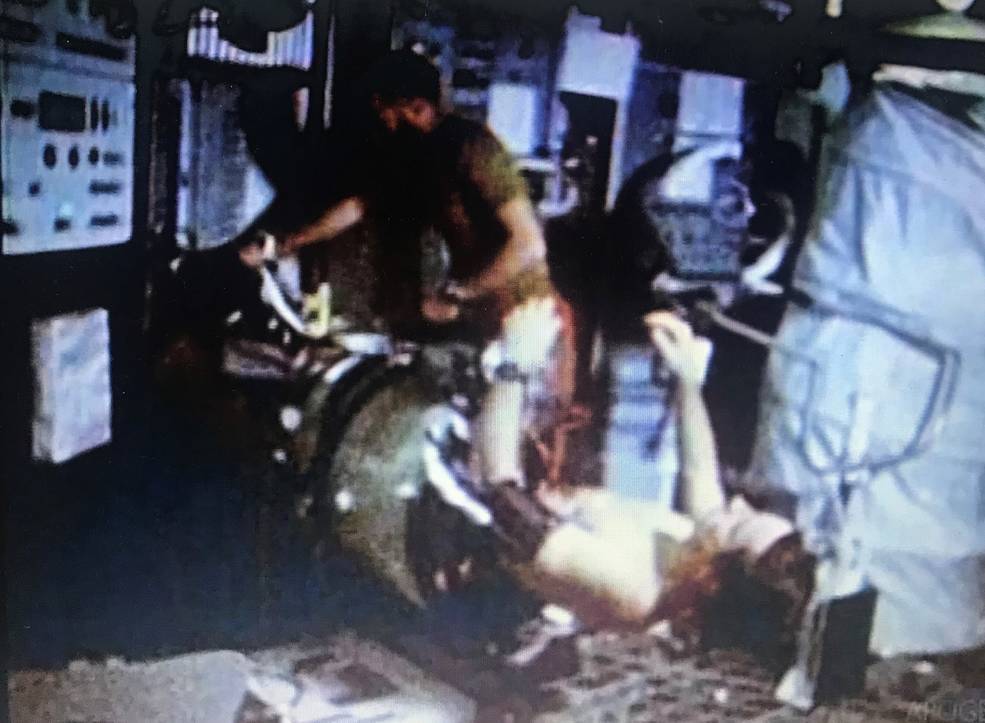
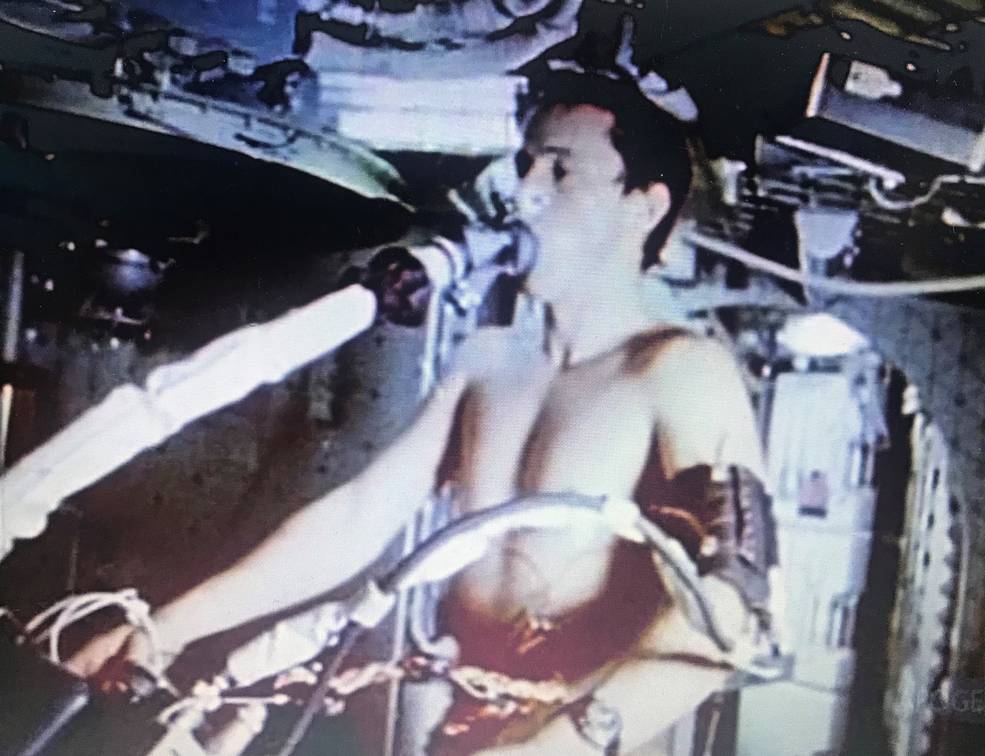
Left: Skylab 4 astronaut Gerald P. Carr, left, assisting Edward G. Gibson with an assessment of his cardiovascular system using the lower body negative pressure device. Right: Gibson assessing his cardiovascular function on the bicycle ergometer.
According to the HBS case study, the next day, Dec. 27, was the day the astronauts went on strike. What actually took place aboard Skylab that day was quite different. The astronauts conducted medical tests, in particular assessing their cardiovascular systems using a bicycle ergometer and lower body negative pressure. They completed 7.5 hours of ATM observations as well as a conference with ATM scientists, photographed ground targets in the South Atlantic Ocean, Saudi Arabia, and coastal Peru, broadcast three TV transmissions including one showing Comet Kohoutek, and carried out a materials science experiment. Carr continued his fruitless search for the missing urine collection bags. At the end of the day, Carr sent a message to Mission Control asking for an assessment of the crew’s performance up to that time, with a request for a follow-up discussion.
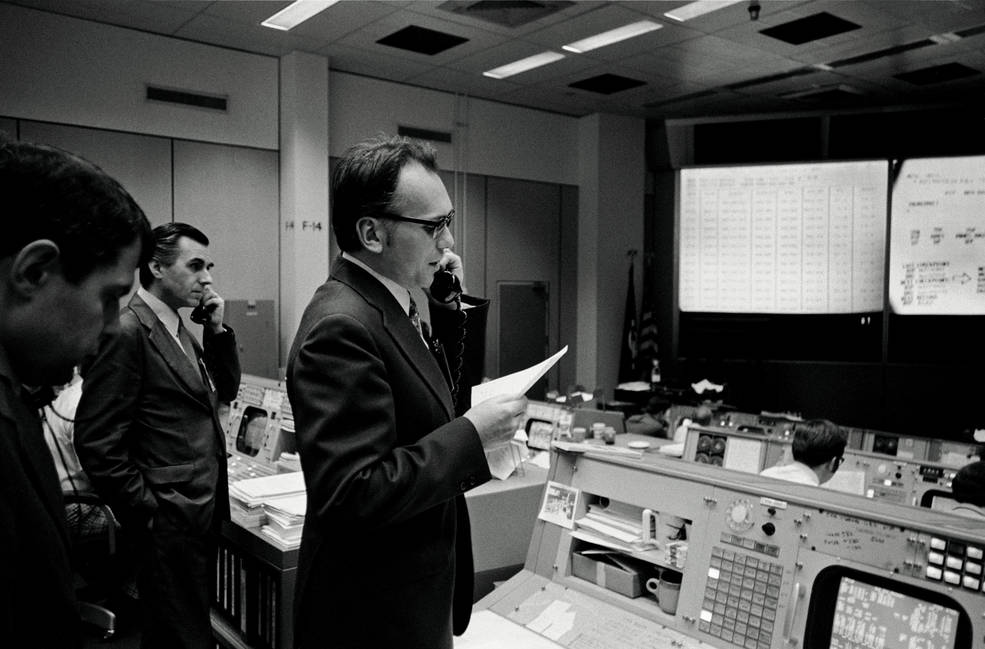
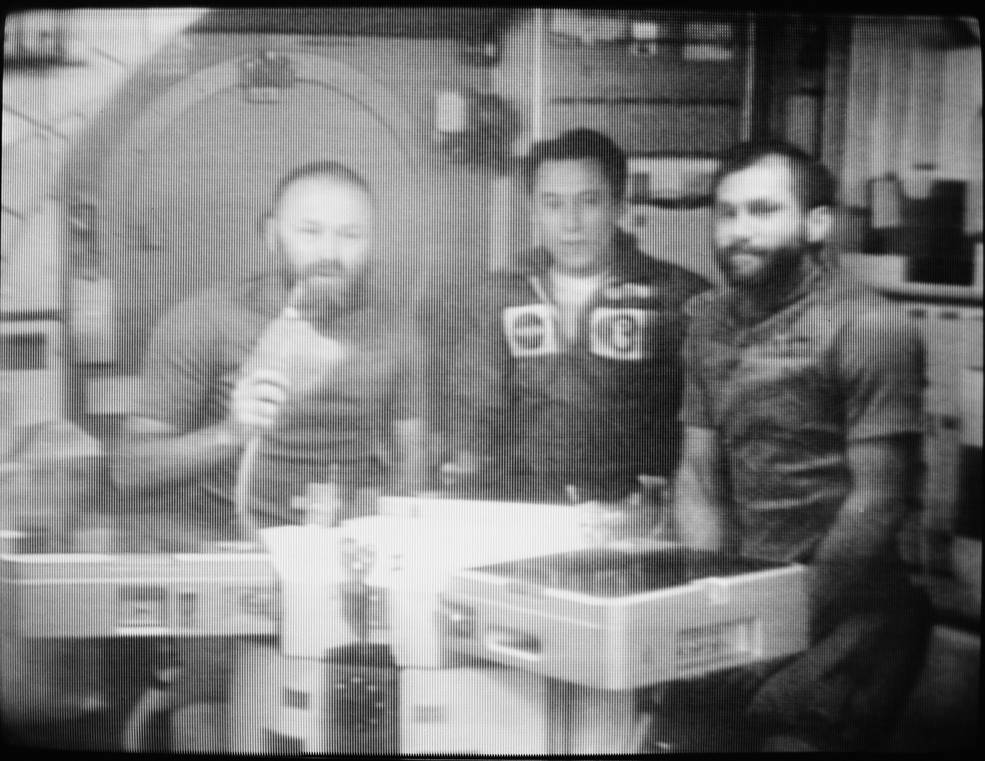
Left: Professor Lubos Kohoutek talking with the crew from the Mission Control Center in Houston. Right: The Skylab-4 crew of Gerald P. Carr, left, Edward G. Gibson, and William R. Pogue during the conference with Professor Kohoutek.
Some sources cite the next day, Dec. 28, as the day of the strike. One reason may be that Cooper wrote that the strike occurred halfway through the mission, and this day was the exact halfway point. The crew continued their cardiovascular assessments and added tests of their taste and smell. They completed more ATM sessions and held a conference with ATM scientists. In perhaps the highlight of the day, Professor Lubos Kohoutek, discoverer of the comet that bore his name, visited the Mission Control Center in Houston and talked to the crew about their observations. A TV broadcast showed the astronauts during the dialogue while all three of their wives watched from the Visitors’ Gallery. Earth observations continued, with photography of fires in Argentina, the Falklands Current, a cyclone near Madagascar, and the Hawaiian Islands. The astronauts prepared for the mission’s third spacewalk scheduled for the next day. At the end of the day, Capcom Truly acknowledged receipt of Carr’s request for an assessment of their performance. He informed the crew that flight controllers were preparing a response and would be ready to discuss it in the next day or two. Earlier in the day, as Skylab passed over the Tananarive, Madagascar, tracking station, a technical problem prevented a lock onto the station’s signal, with Capcom Schweickart making several unsuccessful attempts to reach the crew. He informed the astronauts of the issue during the pass over the next tracking station. Perhaps this was another source for the claim that the crew turned off the radio and did not respond to the ground.
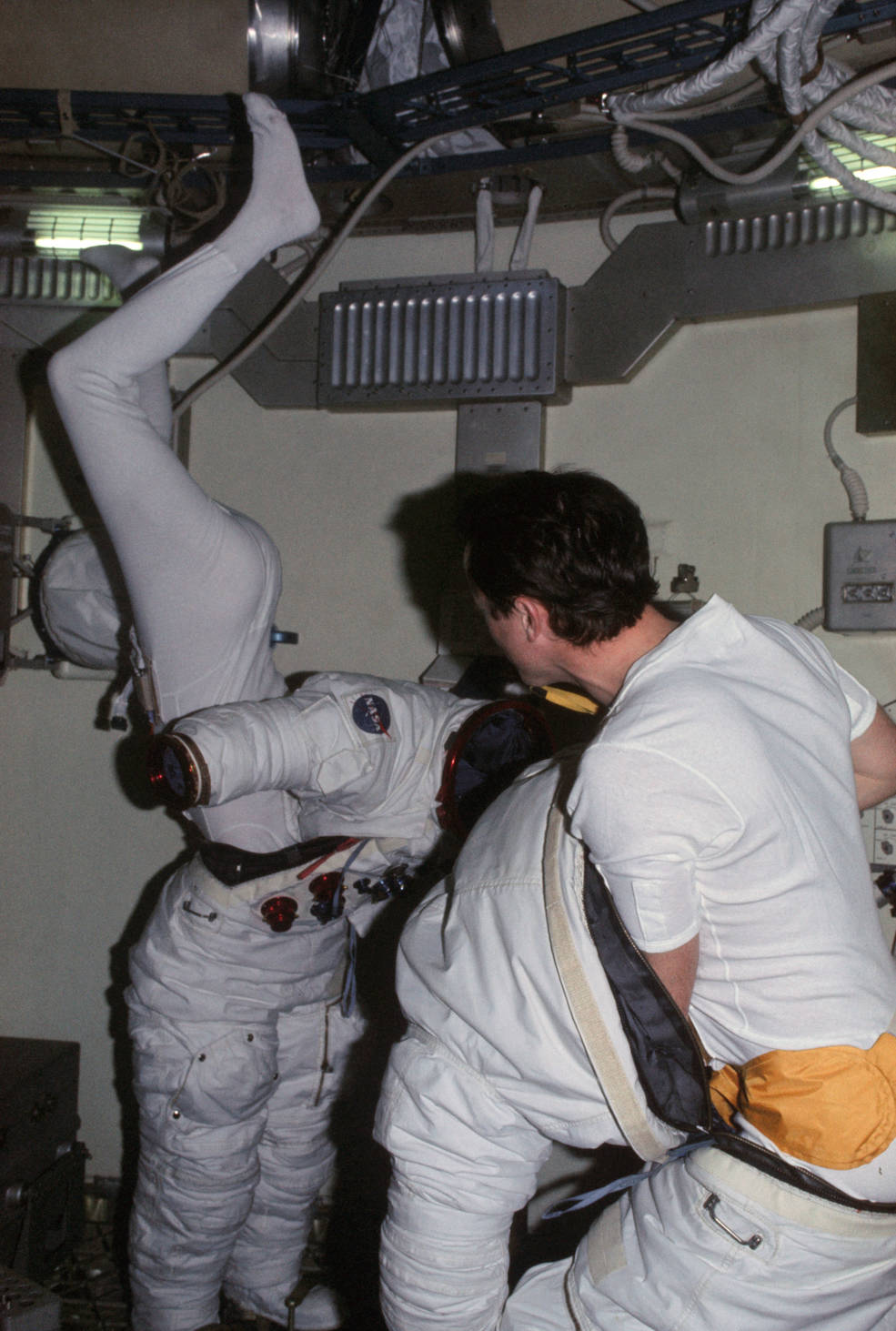
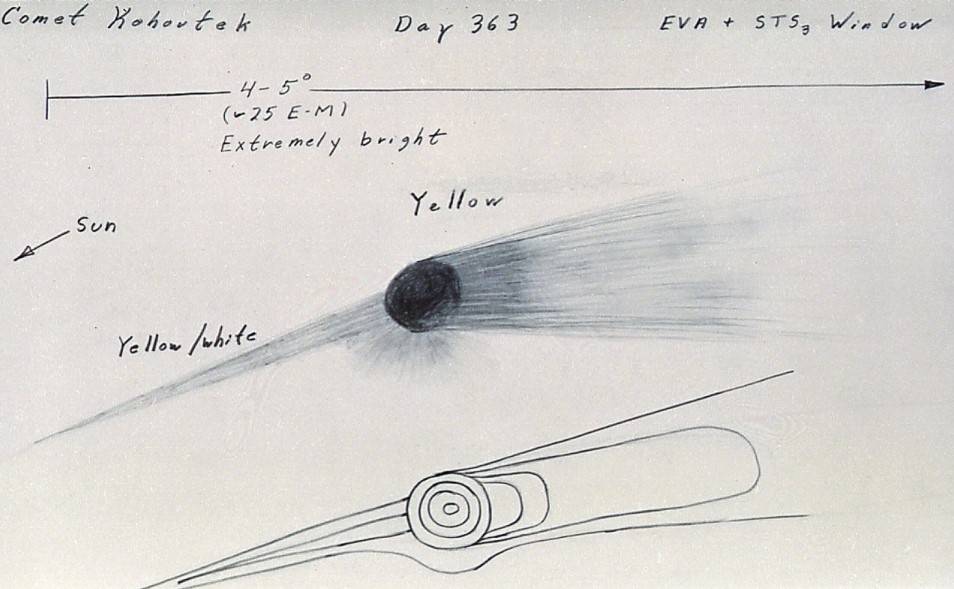
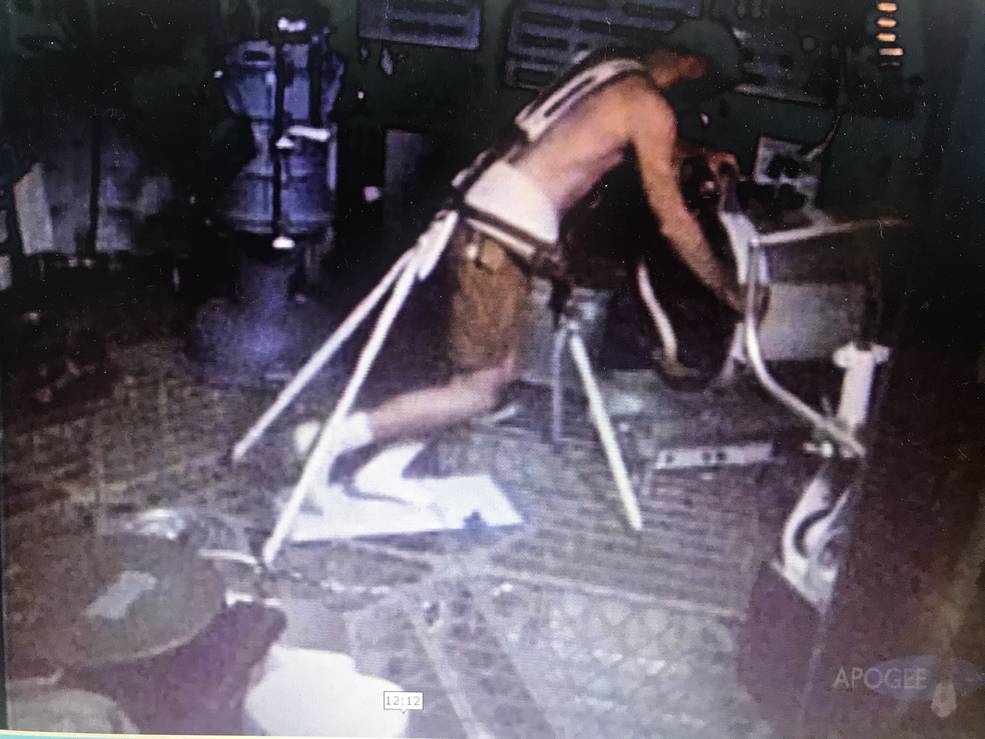
Left: Skylab 4 astronauts Gerald P. Carr, left, and Edward G. Gibson donning their spacesuits for the Dec. 29 spacewalk. Middle: Gibson’s sketches of Comet Kohoutek. Right: Carr exercising on the Skylab treadmill.
The main activity for Dec. 29 was Carr and Gibson’s spacewalk, lasting 3 hours and 28 minutes, to observe and photograph Comet Kohoutek. Once back inside Skylab, Gibson downlinked the sketches he had made of the comet. The rest of the day, the astronauts completed more ATM and Earth observations and evaluated the effects of running and jumping on the treadmill on the station’s ability to steadily point the ATM instruments. Capcom Truly briefly discussed the status of the ground’s response to Carr’s request about their performance, adding that they would schedule time for discussion the next day during the evening communications session.
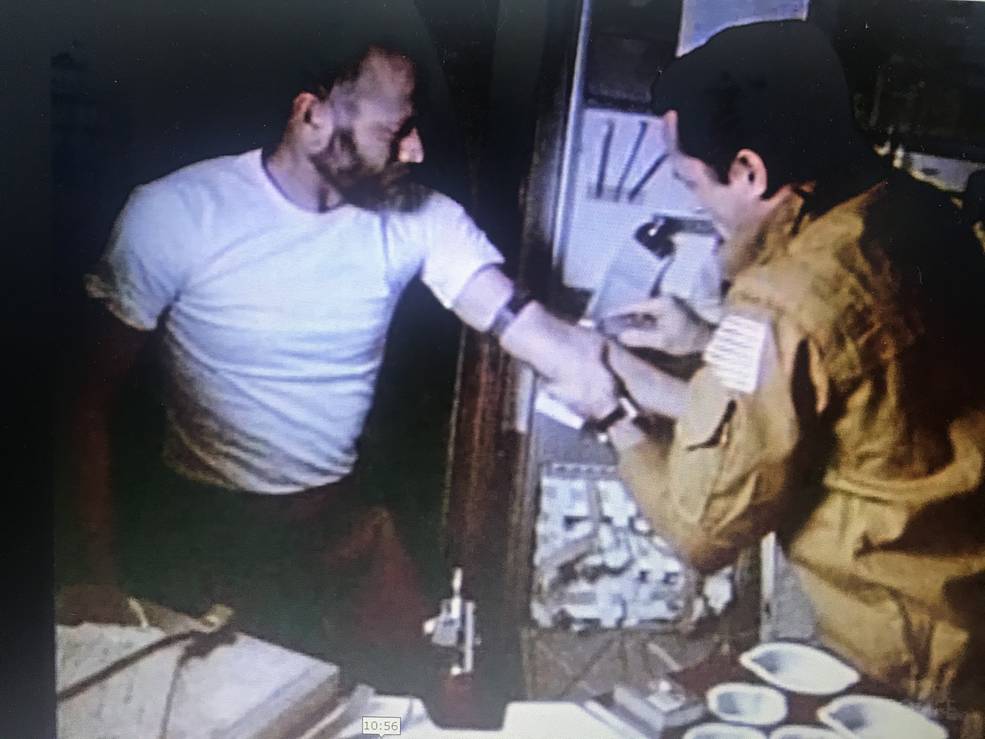
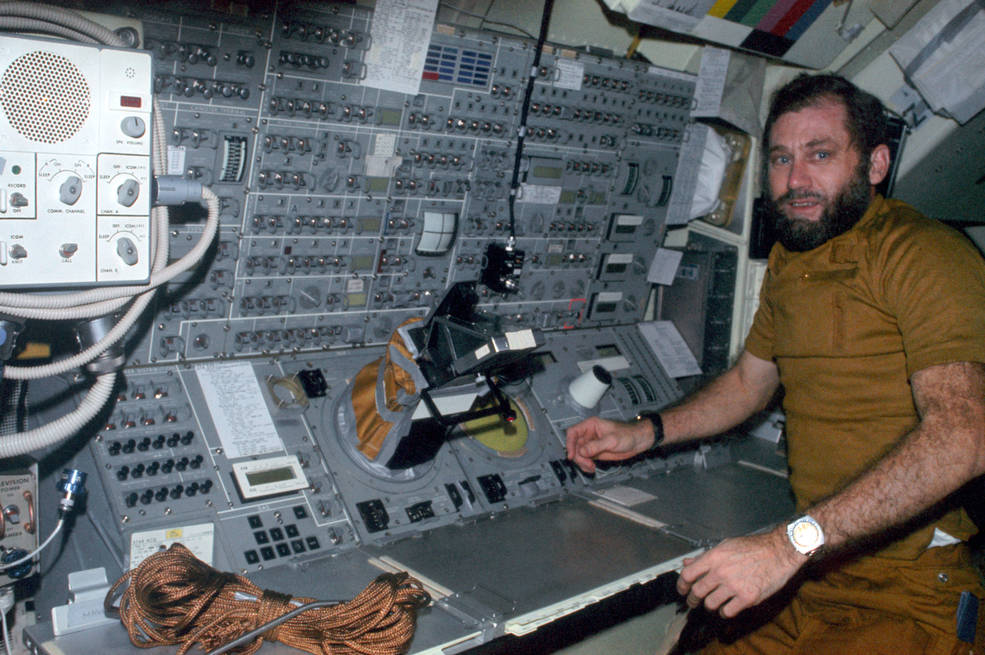
Left: Skylab 4 astronaut Edward G. Gibson, right, taking a blood sample from Gerald P. Carr for a medical experiment. Right: Skylab 4 astronaut William R. Pogue at the controls of the Apollo Telescope Mount.
On Dec. 30, the astronauts conducted more medical studies, this time drawing blood for metabolic investigations, continued ATM sessions and talked with ATM scientists, and completed more Earth observations. Mission Control uplinked a five-page summary of their accomplishments, as Carr had requested. Near the end of the day, the astronauts and Capcom Truly discussed the issues with scheduling during three 10-minute communications sessions over three consecutive tracking stations. While officially called an operations conference, Carr later referred to it as the first sensitivity session in space, as both the crew and the ground freely aired their grievances.
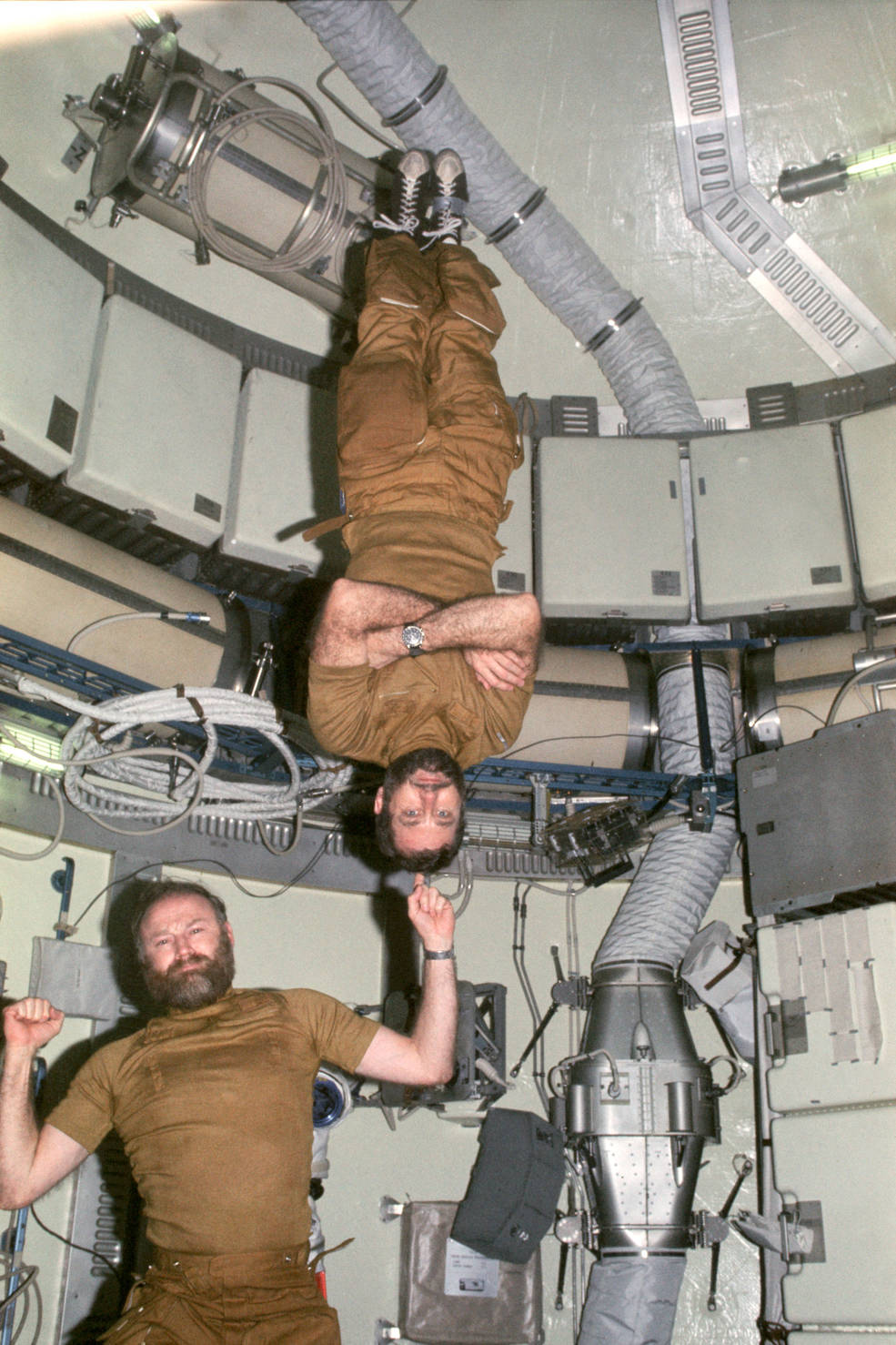
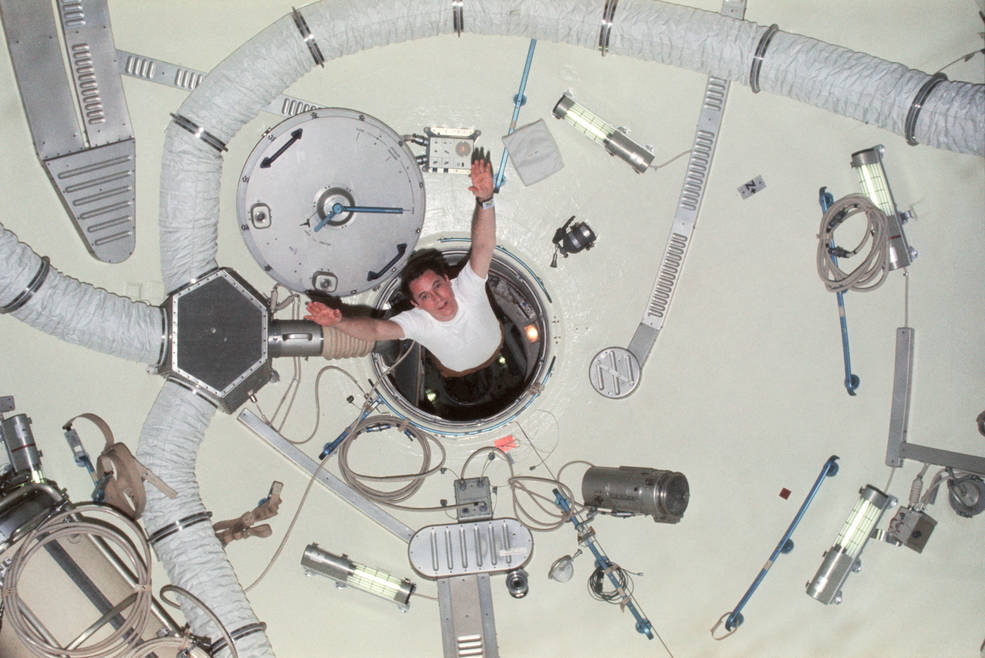
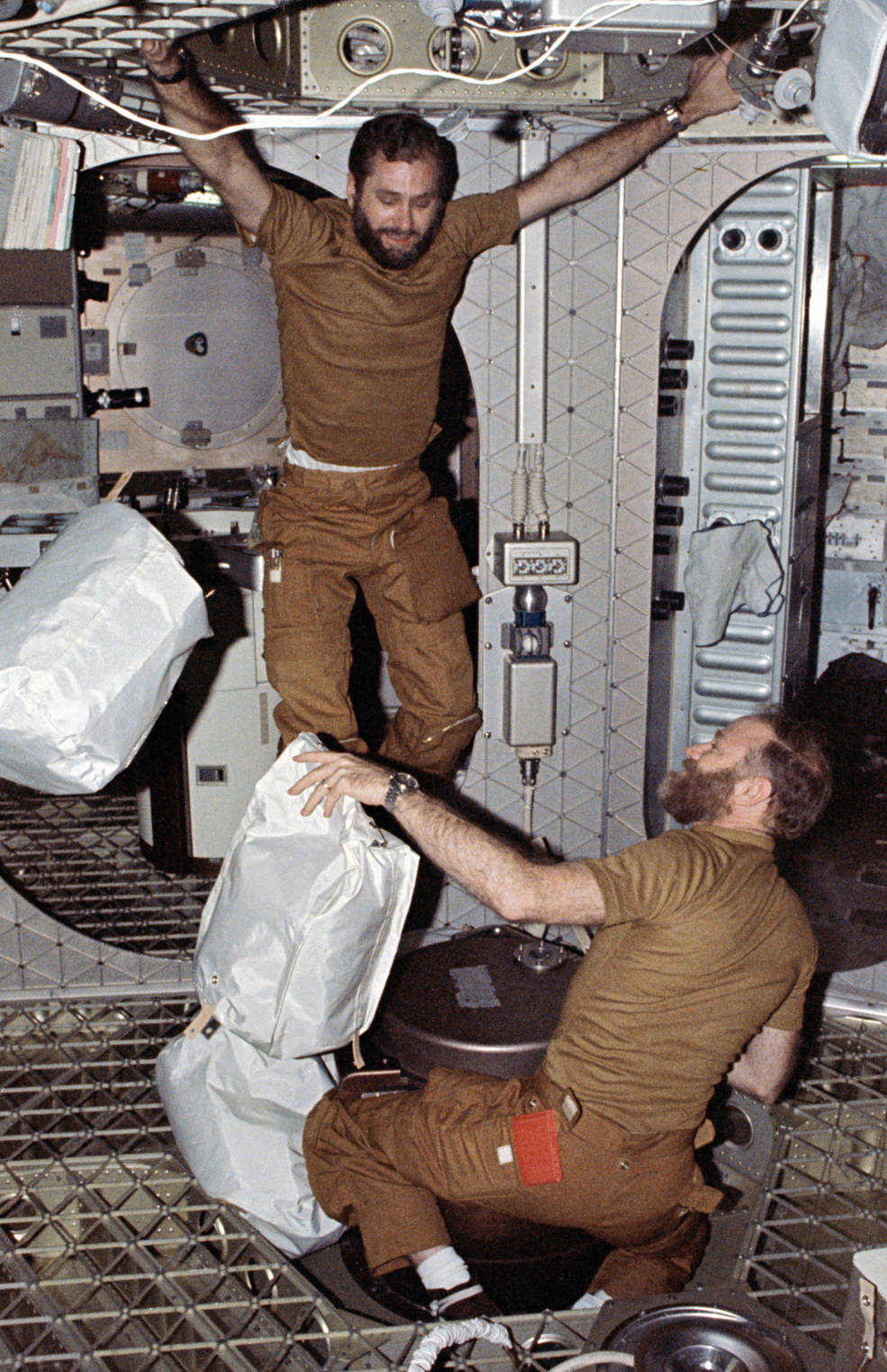
Scenes of life aboard Skylab. Left: Gerald P. Carr, left, and William R. Pogue demonstrate life inweightlessness. Middle: Edward G. Gibson floats into the workshop. Right: Pogue, left, and Carr taking out the trash.
In summary, in evaluating the available evidence, there is no hint that the Skylab 4 crew staged a strike or a mutiny. This evidence was available in 1976, since NASA published all the communications and PAO commentary transcripts shortly after the end of the mission. The astronauts and mission managers were available to be interviewed for their perspectives. A review of newspapers and trade journals from December 1973 reveals not a single mention of a strike or mutiny. The National Geographic Society published a photo essay of the Skylab 4 mission in its October 1974 issue, with no mention of any strike. Subsequent to the publication of Cooper’s book, the three astronauts and mission managers denied that any strike or mutiny took place but acknowledged that scheduling during the first half of the mission was less than ideal. The Dec. 30 operations conference/sensitivity session cleared the air and solved the problem.
It is unfortunate that the unverified story began at all but even more so that over the years prestigious organizations propagated it, giving it credence when it deserves none. Despite the key participants and published articles refuting the claims, they still appear decades after the fact, often in unfortunate settings. One such instance occurred in the headline reporting the death of one of the Skylab 4 astronauts – “William Pogue, astronaut who staged a strike in space, dies at 84” (New York Times, March 10, 2014).




























